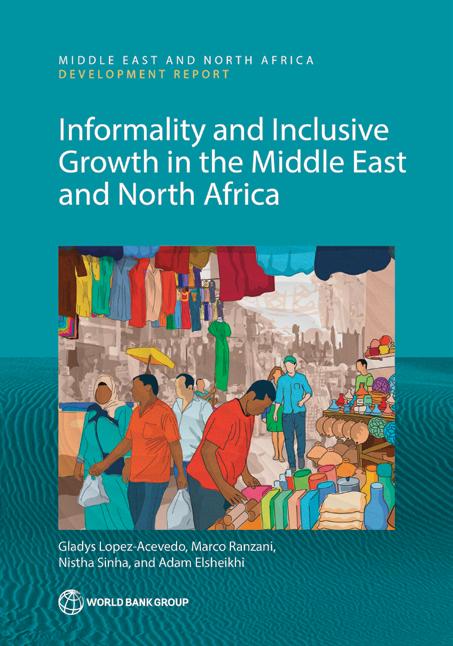
1 minute read
INFORMALITY AND INCLUSIVE GROWTH IN THE MIDDLE EAST AND NORTH AFRICA
By Gladys Lopez-Acevedo, Marco Ranzani, Nistha Sinha, and Adam Elsheikhi
The long-standing informality debate in the Middle East and North Africa (MENA) region has taken on a new urgency as it looks for a pathway to more socially inclusive growth that is less reliant on fossil fuels. This is occurring against a backdrop of subpar labor market outcomes, further growth setbacks, and deteriorating fiscal and current account deficits in the aftermath of the COVID-19 pandemic—and in the wake of high inflation and supply chain disruptions triggered by the Russian Federation-Ukraine war.
This report aims to better understand the characteristics and incentive structure that have led to the prevalence of informal employment in three MENA countries—the Arab Republic of Egypt, Morocco, and Tunisia. The report breaks new ground by adopting a comprehensive perspective to focus on the features of, and interrelationships among, different aspects of these countries’ institutional landscapes to make sense of the complex incentive structure that workers and firms face when deciding between formal and informal options. Specifically, the report groups these issues in three broad realms:
Middle East And North Africa Development Report
June 2023. 310 pages.
Stock no. C211988 (ISBN: 978-1-4648-1988-9). US$49.50
(1) entrepreneur-worker relations,
(2) taxes and transfers, and (3) market conditions.

Innovative Korea
Leveraging Innovation and Technology for Development
Edited by Hoon Sahib Soh, Youngsun Koh, and Anwar Aridi
The Republic of Korea today is a highly industrialized, global leader in innovation and technology. It is the twelfth largest economy in the world and has a per capita income at the average of OECD countries. In the 1950s, however, it was one of the world’s poorest countries, with decidedly bleak prospects. This transformation has made Korea a wellknown case study of successful development.
This report summarizes the sources of Korea’s remarkable growth and the policies and institutional reforms that made it possible. In particular, the report focuses on Korea’s successful transition from a middle-income to a high-income economy and how it escaped the “middle-income trap” by fundamentally transforming its growth model in response to the Asian Financial Crisis of 1997-98: moving toward a more private-sectorled model with greater emphasis on market competition, innovation, and technology. Instead of targeting large firms and industries, industrial policies prioritized small and medium enterprises and technology entrepreneurs. Exports expanded significantly through greater integration in global value chains. Already-high levels of human capital development were complemented by an expanded social safety net and a more integrated approach to education and training.
July 2023. 316 pages.
Stock no. C211961 (ISBN: 978-1-4648-1961-2). US$60.50










